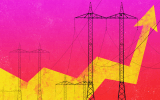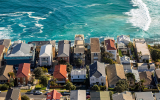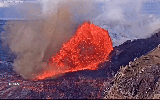
Hawaii’s Kilauea volcano is shooting spectacular lava fountains 100 metres into the air as it erupts for the 32nd time since December.
Kilauea, considered one of the world’s most active volcanoes, is on Hawaii Island, where many locals and visitors have flocked to watch the eruption from public lookouts.
Others are enthralled by livestream footage from different angles shared by the United States Geological Survey.
The lava is said to be contained within the summit crater in the Hawaii Volcanoes National Park, posing no threat to buildings.
The USGS reported that “vigorous north vent lava fountains” started about 6.35am local time, with lava later also erupting from two other fountains.
It said the current eruption had been characterised by “episodic lava fountaining” not seen in any eruptions since 1983-86, when there were 44 eruptive “episodes” in three years.
In the latest series of eruptions, some of the lava fountains have reached up to 300 metres.
According to CNN, visitation to Hawaii Volcanoes National Park has soared since the eruption began, with 49 per cent more visitors in April compared with 2024.
Ken Hon, scientist-in-charge at the Hawaiian Volcano Observatory, told the network that magna from the Earth’s interior was being pushed through chambers under the volcano’s Halemaumau Crater and then above ground through cracks.
He said it was difficult for scientists to predict how long the eruption would last.
“Our job is like being a bunch of ants crawling on an elephant trying to figure out how the elephant works,” Hon said.
The USGS said there had been “fountaining episodes” about once a week since the start of the current eruption on December 23, 2024.
It has listed a “watch” alert for the eruption, stating that high levels of volcanic dust and sulfur dioxide downwind are one “major hazard of concern”. Another concern is the fallout of volcanic fragments from the lava fountains, including volcanic glass known as Pele’s hair that can be carried over 15 kilometres from the vent.
Other significant dangers around the crater included “wall instability, ground cracking, and rockfalls that can be enhanced by earthquakes within the area closed to the public”.
The USGS said this underscored the “extremely hazardous nature” of the area surrounding Halemaumau crater, which has been closed to the public since late 2007.










